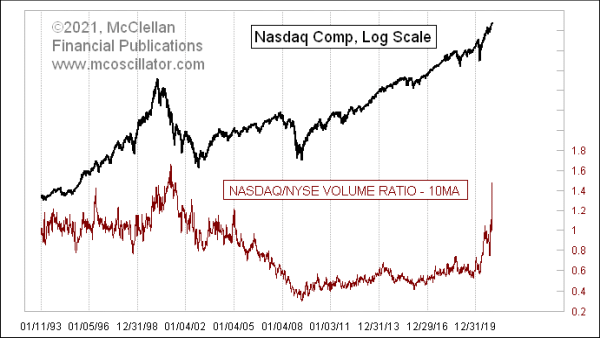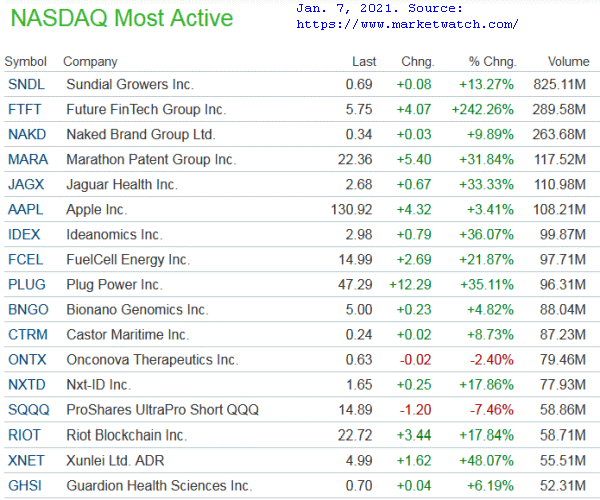
We are seeing some wild numbers for Nasdaq share volume lately, much bigger than anything in recent years. This points to a speculative blowoff underway.
For many years, analysts have looked at the ratio of Nasdaq to NYSE volume as an indicator of tops and bottoms for stock prices. This week’s chart shows a 10-day simple moving average of that daily ratio. The current reading is the highest since all the way back in 2001, when the stock market was in the process of violently unwinding the 2000 Internet bubble peak. If you look closely at the chart, you can see that other lesser peaks in this 10-day MA have been associated with meaningful price tops. This reading is in a whole separate category.
Part of what is happening is an upsurge in the trading of stocks that have a low share price. Here is a recent tally of the most active stocks on the Nasdaq, as published by Marketwatch.

Notice how many of these are priced in the single digits, and many even below $1. So to trade any meaningful dollar amount in these stocks means trading more share volume, due to those low prices.
A lot of investors, especially new investors, hold the funny belief that a low numerical share price means that a stock is “cheap”. That used to be true, back in the 1800s and early 1900s when companies issued stock at a “par” value of $100. That custom was also part of why the NYSE would delist a stock if its share price fell below $5, because that meant it had fallen so far from its par value that it was not considered a reasonable investment.
But nowadays, companies can pick their own IPO prices at fanciful numerical values. So the message of a low-priced stock being a “cheap” stock is no longer a valid one. But that does not stop the Robinhood crowd from playing around in that segment of the market.
And this is a big part of why the Nasdaq/NYSE volume ratio works as an indicator of froth, or fear. The extent to which traders and investors decide it is a good idea to speculate on the low priced stocks, and to jack up their trading volume, can be an indication of frothy bullish sentiment.
Tom McClellan
Editor, The McClellan Market Report